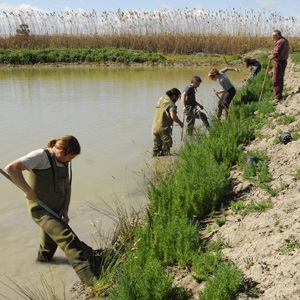CONTRIBUTION
The Asociación de Naturalistas del Sureste (ANSE) is Spain’s fourth oldest ecologist organization. It was founded in 1973 on the initiative of a small group of bird lovers, but quickly found itself with an expanding membership. Its creation was spurred, among other factors, by the entry to force of the first species protection legislation in Spain, particularly the realization that the law’s success would require an organization pushing for its effective enforcement.
“At the time, the general public was unaware of the huge value of biodiversity,” says the director of ANSE, geographer Pedro García Moreno. Things may be different now, but the semi-arid systems of Spain’s South-east remain, in his view, an underappreciated variety of landscape “despite their great ecological worth.”
ANSE’s area of operations covers mainly Murcia, where it has its offices, Alicante and Almería. Scant rainfall, the wind regime and its topographical relief have given birth along its coasts to a type of habitat unique in Europe. But this is also one of the Spanish regions where urban pressure has increased most steeply along with the impact of agriculture and infrastructures. “Our efforts have helped protect many zones, often halting plans for new residential schemes or coastal infrastructures,” García Moreno remarks, “but the pressure has grown exponentially. The difference between protected and unprotected areas is becoming more and more marked.”
ANSE has some 550 members and works alongside volunteers and other organizations. Among its activities are campaigns to protect natural areas and threatened species, control of pollutants harmful to wildlife, reporting of environmental offences and the study of local ecosystems, including littoral zones, irrigated cropland and rivers. One of its restoration projects with autochthonous flora has helped preserve the last sand stretches along the Mar Menor, where it also halted the urbanization of what are nowadays protected areas. Earlier multi-year campaigns led to the designation of the marine reserves of Cabo de Palos, over two decades back, and Cabo Tiñoso, in 2016.

